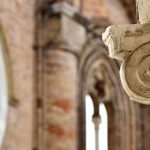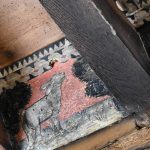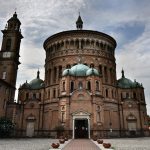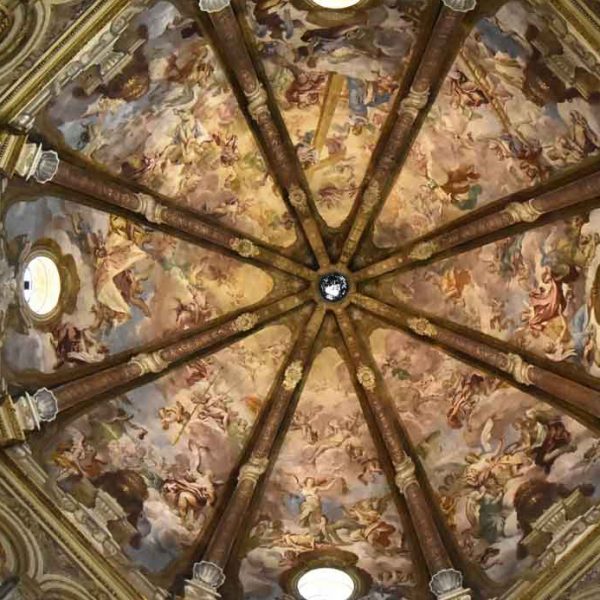 Tutti gli itinerari
Tutti gli itinerari
Visiting some of existing examples of Renaissance architecture
The Renaissance period in Crema was characterized by the art of local masters and artists and by those from further afield who were gradually called to the town to decorate its churches and palaces. On this itinerary we will explore the visible traces of this Renaissance culture by visiting some of the existing examples of Renaissance architecture in Crema. We begin our tour in Piazza del Duomo.

The Renaissance in Crema was characterized by the political presence of the Republic of Venice, which began in 1449 after centuries under the influence of Milan. Crema was almost completely surrounded by the Duchy of Milan whilst under the Venetian domination and therefore received privileged treatment which allowed the town to have a good level of administrative autonomy, it favoured the economy and encouraged the flourishing of the arts. In this period Crema was characterized by new workshops of artists, painters, sculptors and carvers and among others we remember De Marchi, specialized in wood carving, Bombelli in painting and De Fondulis in terracotta sculpting. Other important names are those of the painter Vincenzo Civerchio and the architect Giovanni Battaglio.

We advise you to start your tour from Piazza Duomo. Here in the piazza the Venetian presence can be seen particularly in the architecture. In the sixteenth century (1525-55) the Palazzo Comunale , the Torrazzo , Palazzo Pretorio and the Palazzo della Notaria (today Palazzo Vescovile) [link page] were all rebuilt. The large porch of the Palazzo Comunale, characterized by its marble columns and terracotta decorations, represents the entire square and the windows are typical of the Venetian Renaissance with examples of mullioned windows and three-arched windows, but built in terracotta materials typical of Lombardy.

Even the Torrazzo and the Guelph Tower, although the latter retains its medieval forms, bear the signs of the Venetian presence with the symbol of the Lion of San Marco.

We advise you to go inside the Cathedral, which dates back to medieval times itself, but here you can see many valuable examples of work from the Renaissance period. On the central wall of the apse you can admire the Assumption by Vincenzo Civerchio, one of the best exponents of the Renaissance culture in Crema, while on the left wall of the choir we can find the Annunciation by Civerchio together with the two decorated organ doors. On the wall of the left nave is another work signed by Civerchio, a panel of the Saints Sebastian, Rocco and Christopher (1519).
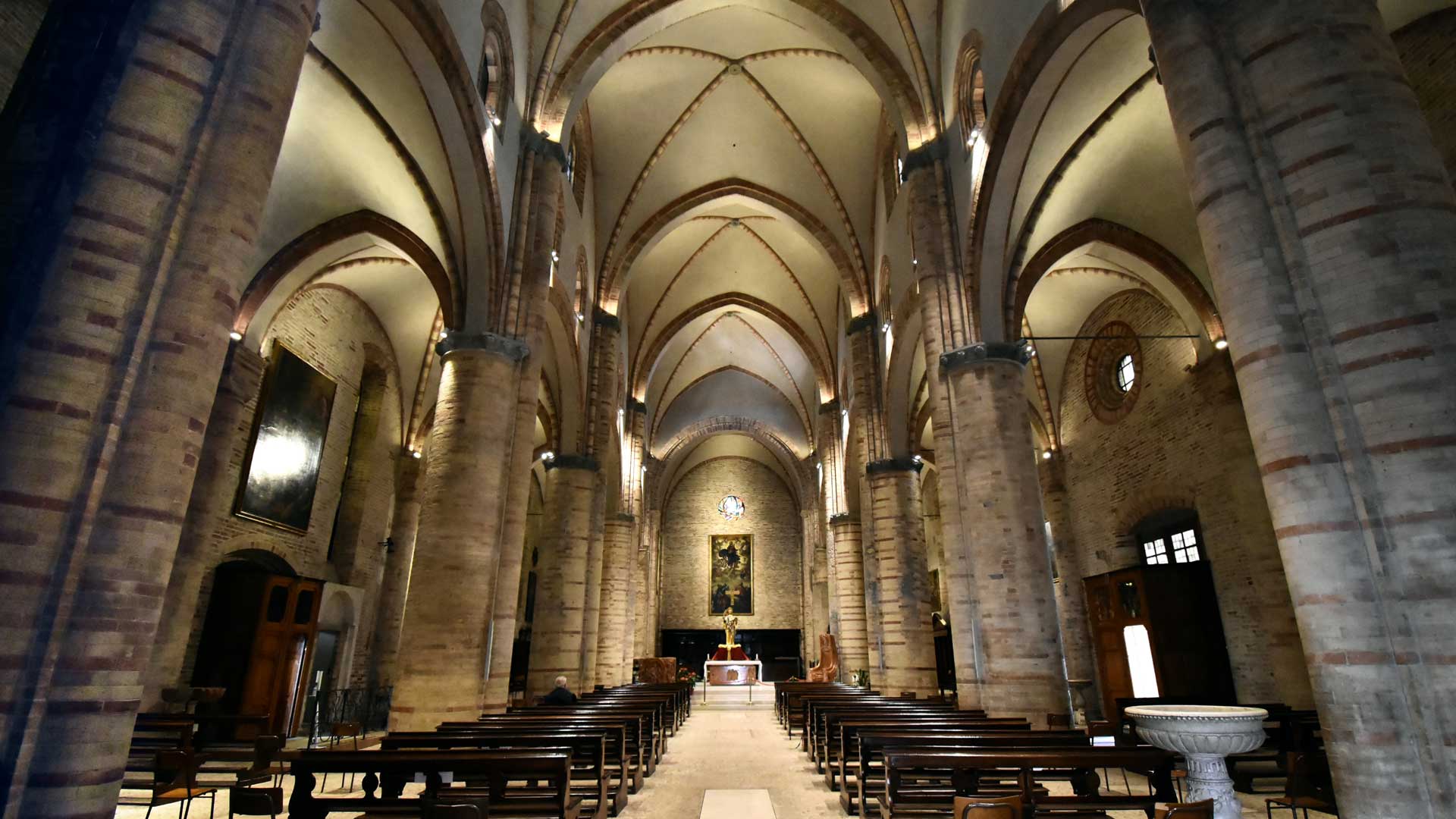
From Piazza Duomo we advise you to go to Piazza Trento and Trieste where, on the corner of Via Aurelio Buso, you will find the Church of Santa Maddalena and Santo Spirito. It is a small, deconsecrated church, which unfortunately cannot be visited today, but it is an exceptional example of Renaissance architecture in Crema. The church was designed between 1511 and 1523 by Agostino de Fondulis, a local artist from Crema. The building in exposed brickwork has a Latin cross plan and in the upper part we find a dome with an octagonal drum. The facade is divided by pilasters retaining the refinement of Renaissance forms. The same artist De Fondulis also created the Lamentation on the Death of Christ for this church, which today hangs in the parish church of Palazzo Pignano.

Another particularly interesting aspect of the Renaissance culture in Crema was the production of painted, wooden, ceiling panels, often produced in the town’s own workshops, and which decorated many of the ceilings of the town’s noble palaces. Today you can still admire the panels which once decorated Palazzo Benzoni, in the Civic Museum of Crema and Cremasco [link page]. In the former convent of Sant’Agostino, which houses the town museum, the original wooden panels from the ceiling of the former convent library can also be enjoyed in the Sala Cremonesi, in their original location.
The entrance of the Palazzo della Provincia still retains a ceiling decorated with wooden panels painted with coats of arms, portraits and animals. The same type of decoration can be found in a room on the main floor of the same building, which also represents noble coats of arms, animals and portraits. Many other panels still decorate the halls of private buildings or have passed into private collections or are kept in museums.

A must on your visit to the museum is the Salone Giovan Pietro da Cemmo, or the former refectory, frescoed in 1507 by the painter who gave his name to the room. On the end walls are paintings representing the Last Supper, a copy of Leonard da Vinci’s fresco in Milan, and the Crucifixion. The side walls are decorated with lunettes displaying portraits of illustrious Augustinian monks.

This tour of Renaissance revelations in Crema would not be complete without a visit to the jewel of the city, the Basilica of Santa Maria della Croce. Construction of the church began in 1490 on the site of a miraculous apparition of the Madonna. The construction project was entrusted to Giovanni Battagio, who had previously worked with Bramante. The architect received inspiration from Renaissance architecture for the central plan design of the church. At that time, in fact, this form of central plan was very widespread and was studied by many architects, including Leonardo.

The building work was then completed by Antonio Montanaro. On the outside there is a large central tiburio, or lantern structure covering the curved surface of the dome, with three rows of galleries, flanked by four chapels. On the high altar you can admire the magnificent altarpiece by Benedetto Rusconi, also known as ‘Diana’, (Venice, 1460-1525), who probably created it in 1501.

Giovanni Battagio (Lodi, c.1440 – c.1500) was a sculptor and architect who achieved his first success in 1465-66 when, together with his brother Antonio, he donated some terracotta cornices for the Ospedale Maggiore in Lodi. In 1477 he worked as an engineer and architect in Milan and in 1482 he began doing business buying and selling land and property with Agostino de Fondulis, who married his daughter. Between 1484 and 1485 he worked with his son-in-law in Piacenza on Palazzo Landi. Between 1486 and 1489 he designed and directed the works for the loggia in Santa Maria della Passione in Milan. In 1488 he went to Lodi for the construction of the new church of the Incoronata. The following year he was fired from this job and so he returned to Milan. From 1490 to 1493 he worked on the construction of Santa Maria della Croce in Crema, which was then completed by Antonio Montanari in 1499. We still don’t know the date of his death.

Agostino de Fondulis (Crema,c.1460-1521) was a terracotta sculptor and architect and was one of the most important sculptors of the Renaissance in Crema. Probably born in Crema, he soon moved to Padua where his father Giovanni, who was also a terracotta sculptor, was a major protagonist of the artistic life of the city after the departure of Donatello. Today we have evidence of his production in Milan, where he worked on the Lamentation in Santa Maria at San Satiro in 1482. The construction of this church began in 1477 under the project of Donato Bramante. Agostino also realized the friezes of the baptistery and the nave for the same church. The sculptor had probably only just moved to Padua, when in the same year he participated in the social life of the city with the sculptor and architect Giovanni Battaglio. Later Agostino married Battaggio’s daughter. Between 1484 and 1486 he worked in Piacenza on the decorations of the Landi Palace. Around 1490 he moved permanently to Crema. He worked on different construction sites not far from the town, such as Palazzo Palla near Cortemaggiore (about 1489-1495) and Palazzo Fodri in Cremona (before 1490). Between 1502 and 1506 he was back in Milan where he made twelve terracotta statues for a particular external covering of the domes of the lantern of Santa Maria dei Miracoli near San Celso. From 1510 he began the Compianto which today hangs in the parish church of Palazzo Pignano, but was originally created for the Church of Santa Maddalena and Santo Spirito in Crema. This church was one of his first projects as architect, followed by the Church of Madonna della Misericordia in Castelleone(c.1513-25) and for the parish of the saints Giacomo and Filippo of the same village(1517-1551). Finally towards the end of his working life, he created five of the eight statues of the Lamentation, which are kept in the crypt of the church of San Sepolcro in Milan. He came back to Crema for the last time in 1520-21 and he died in 1528.

Vincenzo Civerchio (Crema,c.1470-1544) was the most important painter of the Crema Renaissance. In 1487 he went to Milan and then in 1491 he moved to Brescia, where he imitated the models of Vincenzo Foppa and Bernardo Zenale. He worked with Francesco Napolitano on the Polyptych of San Barnaba(1495), now preserved in the Pinacoteca Tosio Martinengo museum in Brescia. In 1504 he signed and dated the altarpiece depicting
the Lamentation in Sant’Alessandro in Brescia. In 1505 he signed and dated the panel featuring San Francesco, which is now displayed in the Civic Museum of Crema and Cremasco. In 1507 he produced some paintings for the parish of Romano di Lombardia, which are now lost. In 1509-10 he painted the Insignia of the Town Hall of Crema, also lost. In 1510-12 he was still working in Romano di Lombardia, but in 1517 he signed a fresco depicting the Assumption in Santa Maria dei Campi in Travagliato. In 1518 he painted the polyptych for the altar of San Sebastiano in the Cathedral of Crema. Around 1520 he created the canvas showing the Baptism of Christ in San Giacomo in Crema. He went on to paint the miraculous image of the Madonna della Misericordia (1522) for the Duomo or Cathedral in Crema and created the new organ doors depicting the Annunciation. In 1525 he produced the polyptych for the parish church of Palazzolo sull’Oglio. In the same years he painted the Annunciation on the triumphal arch of the church of San Bernardino in the town of Crema. In 1531 he painted The Funeral of the Virgin for the Cathedral of Crema, now in the Szépművészeti Múzeum in Budapest. Later he painted a large canvas depicting the Assumption of the Virgin for the main altar of the Cathedral of Crema. Lastly, in 1539 he signed and dated his canvas of the Baptism of Christ, which originally hung in the church of San Domenico in Crema and is now at the Tadini Academy Art Gallery in Lovere.

Info
The itinerary starts from Piazza del Duomo




















